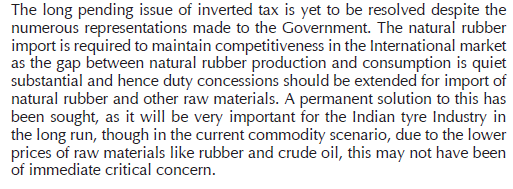Business
Products
Tyres, Tubes & Flaps for various class of vehicles like Two wheelers, Passenger Cars, 3 wheelers, Pick up, LMV, Farm Vehicles, Trucks & Buses and OTR.
Funskool: JV with US toy major Hasbro - emerged as the largest toy company in India today.
While small toy stores catered to the mass market, Funskool was eager to increase its footprint and the visibility of its many products in large formats. To achieve this, it opened its own retail stores. Funskool boasts a wide presence with as many as 16 warehouses to serve 4,000 retail outlets. It also opened its first retail store in Chennai for one of its major partners ‘Lego’, the building-blocks brand.
Today, after being in the business for 25 years, the company has reported a growth of 20-25% and has set a target of around Rs 120 crore.
Paints & Coats:
MRF’s Speciality Coatings Division was the first paint manufacturer to bring to the Indian market, over two decades ago, the ultimate new generation Polyurethane Coating (PU) Systems, that too in retail packs. The Speciality Coatings Division was hived off into a subsidiary ‘MRF Corp Limited’ in April 2011.
MRF Polyurethane Coating systems are available for a variety of substrates and provide superior surface finish that guard against abrasion, corrosion, chemicals, elements of weather and the Sun’s UV radiation. This makes the coating virtually maintenance - free.
MRF PU Coatings cater to diverse segments such as Automotive, Decorative and Industrial through a wide range of pigmented and clear finishes across Metallic, Glossy and Matt surface finishes. Today MRF Corp retains its leadership in the Polyurethane finish segment and is the preferred choice amongst dealers and customers because of its intrinsic quality, continuous innovation and stress on
customer satisfaction.
MRF Pretreads
MRF PRETREADS is the most advanced precured retreading system in India. MRF forayed
into retreading as far back as 1970. Today, MRF has perfected the art of recured retreading with its extensive knowledge in tyres and rubber.
In the MRF PRETREADS system, the tread rubber is precured from MRF’s factory in a carefully controlled environment, thereby ensuring world-class quality. Today, MRF PRETREADS has emerged as the Mileage leader in precured retreading and also has the specialized expertise required for retreading Radial Tyres of Truck, Bus, LCV and Passenger vehicle.
Services
Various customer touch point service initiatives in various formats like T&S, TIRETOK, TYREDROME, MRF FAST etc.
Additionally, MRF is also developing skill based employment by way of MRF INSTITUTE OF DRIVER DEVELOPMENT.
Research & Development
The Design process at MRF starts from the customer - inputs from individual customers are compiled by marketing and given to Corporate Technical MRF’s R&D and Product Development Division or vehicle specific requirements are received from the OE customer.
MRF’s team of 300 engineers and scientists gives MRF its enormous strength in product design. Requirements received, a team now works on converting the customer input into a Design Concept.
MRF uses cutting - edge technologies in predictive testing and design validation before it leaves the drawing board. These advances have significantly brought down the time to market for new designs.
Advanced raw materials are tested and approved in our NABL accredited laboratories. MRF
works closely with global suppliers in using the latest developments in materials across the globe. Our laboratories which have the very latest in testing equipment closely monitor the quality of the material going into our tyres at the time of approval and regularly after that.
The prototypes for verification and validation testing are manufactured in one of MRF’s 6 factories all of which are TS 16949/ISO 9001 certified. The tyres then go through testing for confirming the architecture and a series of indoor testing to ensure that they meet MRF’s tight standards and also those required by the OEM or by any of the national standards like BIS/JIS/ETRTO/T&RA.
Tyres are now handed over to the Vehicle Dynamics Group, who now validates the design on the vehicle. These tests are done at the test track in a series of manoeuvres at various speeds, pushing the tyres to the limits of its capabilities.
MRF also tests tyres on fleets across the country to ensure that the tyres have endured successfully all the types of roads on which our customers travel daily. Race Tracks and Indian Roads are our laboratories.
Only after this do we give any tyres to the customer - all global players manufacturing a global class of vehicles. MRF has been designing tyres this class of vehicles for more than a decade now. MRF tyres have met the demanding requirements of these vehicles, backed by an R&D team which is completely in-house and self reliant.






